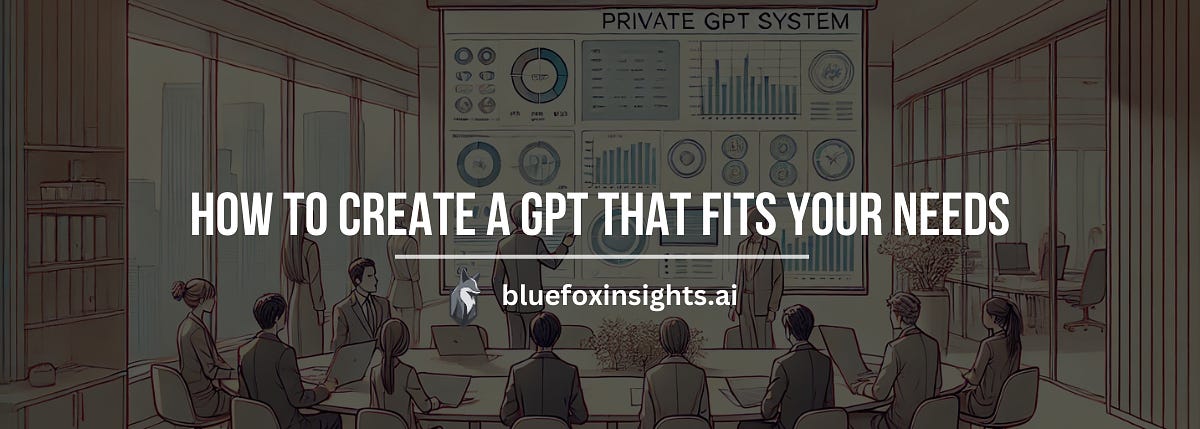Start Using AI Now - 5. What Are GPTs, and How Can You Make One That Fits Your Needs?
Artificial intelligence (AI) tools have become an integral part of business and daily life. While each AI platform has its strengths and weaknesses, OpenAI’s ChatGPT offers a standout feature—customizable GPTs. These tailored AI assistants can be fine-tuned to suit specific needs, making them a flexible and powerful tool for professionals across industries.
This article explores how GPTs work, how you can create one, and why this capability might be a game-changer for solving unique challenges—even during unexpected situations, like preparing for a colonoscopy!
How Do GPTs Work?
GPTs operate using brain-inspired AI, a concept where AI learns patterns and relationships by analyzing vast amounts of data . Instead of following pre-set rules, GPTs rely on machine learning algorithms to understand context, predict responses, and adapt to user instructions over time.
What sets GPTs apart is their ability to be customized. With ChatGPT’s GPT functionality, users can design personalized AI assistants by defining specific instructions, behaviors, and knowledge bases. This allows businesses and individuals to create AI systems tailored to their unique goals and workflows.
How to Create Your Own GPTs
Setting up your custom GPTs is simpler than it sounds. Here’s a quick step-by-step guide:
Access the GPT Builder – Open ChatGPT via a web browser and navigate to the GPT customization section. (I do not believe you can create GPTs via their desktop or mobile apps yet)
Define Goals and Behavior – Provide clear instructions about what you want your GPT to do. You can specify tone, expertise, and focus areas.
Add Specialized Data – Upload documents, links, or reference materials to train your GPT on industry-specific knowledge.
Test and Refine – Interact with your GPT, tweak its behavior, and ensure it responds as expected before deploying it for wider use.
The process is designed for ease, meaning you don’t need programming skills to create something functional and impactful.
Examples of GPTs for Different Professions
One of the best things about GPTs is their versatility. Here’s how different professionals might use them:
Marketers: A GPT could analyze customer feedback, suggest content ideas, and even generate social media posts aligned with a brand’s tone.
Lawyers: Custom GPTs could summarize case law, draft contracts, or provide legal citations—saving hours of research time.
Educators: Teachers could create GPTs to generate quizzes, explain complex topics, and provide personalized tutoring for students.
Healthcare Professionals: Doctors might use GPTs to process patient records, suggest treatment plans, or provide explanations of medical terms.
Project Managers: GPTs could streamline workflows, track project milestones, and generate status reports automatically.
The possibilities are nearly endless, empowering users to simplify repetitive tasks, enhance creativity, and improve efficiency.
A Personal Story—Using a GPT for Colonoscopy Prep
Let me share a quick, real-life example of how GPTs can help—even in the most unusual scenarios.
During my colonoscopy prep, I needed to be extremely cautious about what foods and drinks were allowed. Instead of manually searching through endless lists, I created a GPT specifically for this task.
I instructed it to:
Only respond to short, one-word or phrase inputs (e.g., “broth,” “apple juice”).
Confirm whether each item was okay during prep.
Provide a clear explanation for why the food was or wasn’t allowed, ensuring the responses were accurate and avoided any AI hallucinations.
The results were incredibly helpful. For example, when I typed “apple juice,” the GPT responded:
“Apple juice is allowed as long as it is clear and pulp-free. Pulp can leave residue in your colon, which may interfere with visibility during the procedure.”
This simple interaction saved me from confusion and unnecessary stress during an already delicate process.
Why You Should Try GPTs
If you’ve ever faced tasks that are repetitive, complex, or time-sensitive, creating a custom GPT might be the solution you didn’t know you needed. Whether you’re a business leader, a freelancer, or someone managing personal challenges, GPTs offer a flexible, user-friendly way to streamline tasks and improve outcomes.
Give it a try—experiment with a small project, see what works, and refine it over time. Who knows? You might end up creating a GPT that not only solves problems but also inspires new ideas.
What would your first GPT look like? Start building and find out!




